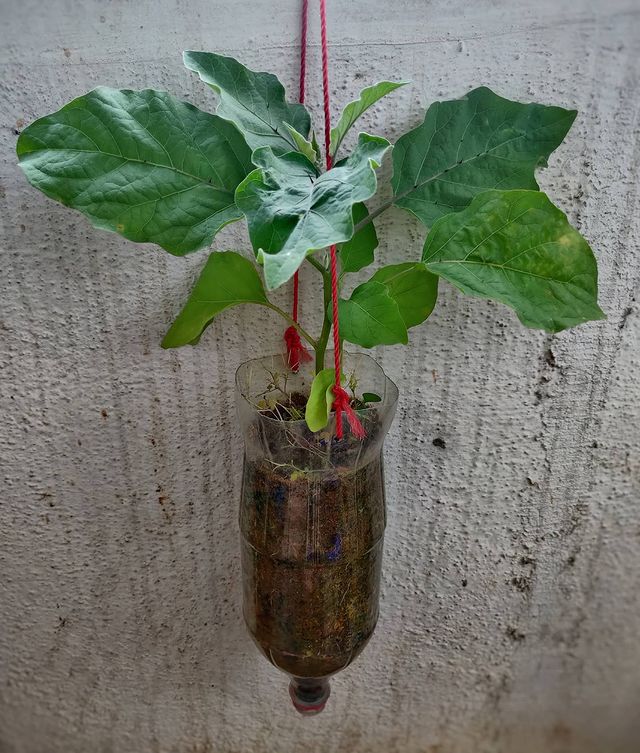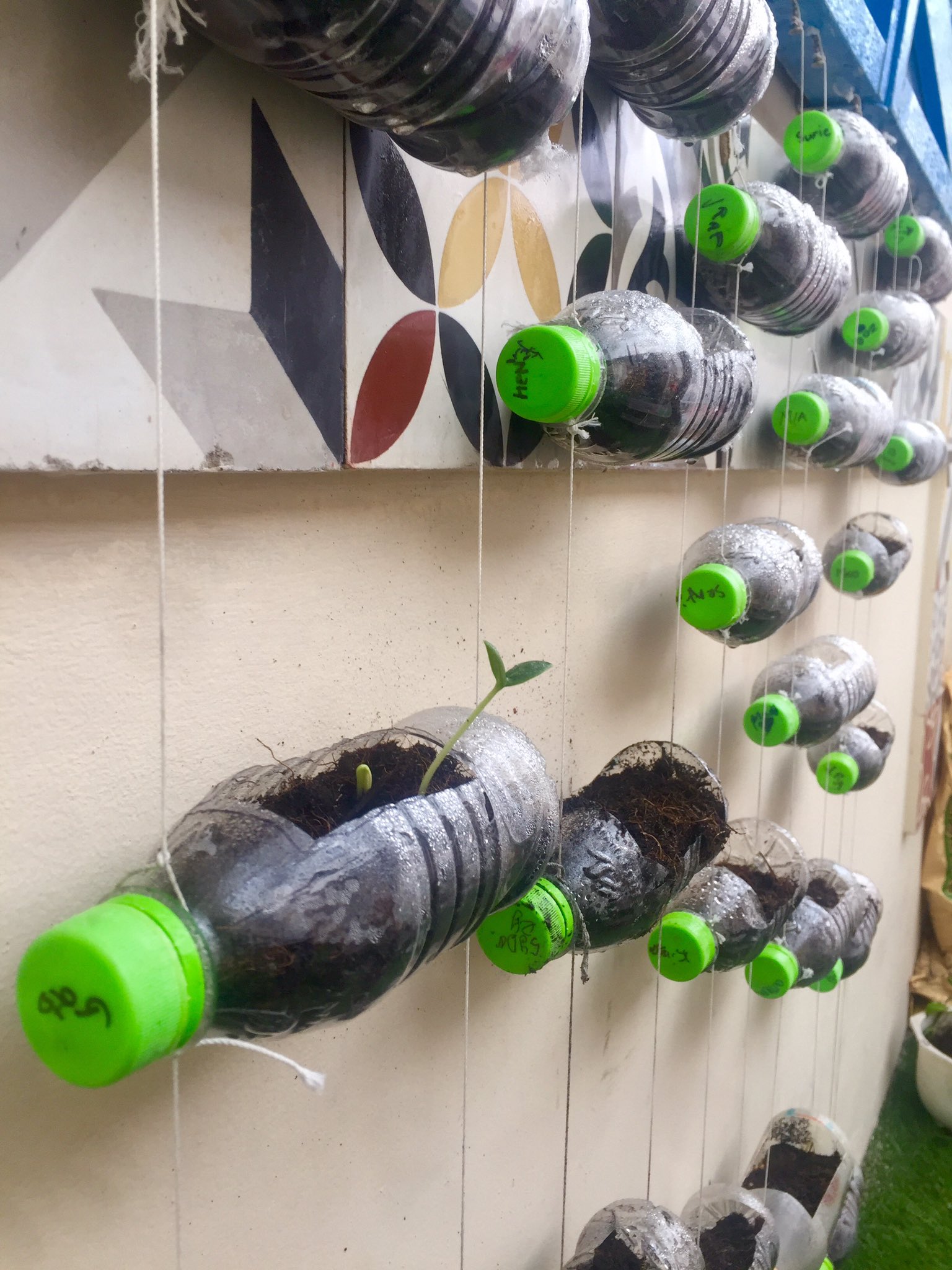
The idea of repurposing empty bottles as plant pots has gained popularity in recent years, with many gardeners embracing this eco-friendly approach. However, the question lingers: are empty bottles made into plant pots useful or harmful? In this article, we’ll delve into the topic of using plastic bottles as plant pots to help you make an informed decision. Explore the potential advantages, such as sustainability and resourcefulness, while also considering the possible drawbacks and risks that come with this creative gardening method. Let’s dive into the world of bottle-based gardening and determine if it’s a useful or harmful practice for nurturing your green companions.
Table of Contents
Weighing the Pros and Cons: Are Empty Bottles Made Into Plant Pots Useful or Harmful?
Advantages of Using Plastic Bottles as Plant Pots

Sustainability and Recycling Benefits
One of the primary advantages of repurposing empty bottles as plant pots is the positive impact on the environment. By recycling these bottles into gardening containers, you actively reduce plastic waste and contribute to a greener planet. Embracing sustainability in your gardening practices helps minimize your carbon footprint and sets an example for others to follow in creating a more eco-conscious world.
Cost-Effective Gardening Solution

Empty bottles serve as a budget-friendly alternative to traditional plant pots. Instead of purchasing expensive containers, you can use readily available empty bottles at no additional cost. This cost-effective approach allows you to allocate your gardening budget to other essential supplies while still providing a nurturing home for your plants.
Whether you’re a seasoned gardener or a green thumb enthusiast on a budget, using empty bottles can save you money without compromising on your garden’s beauty and functionality. The cost-effectiveness of this approach allows you to allocate your gardening budget to other essential supplies or invest in specialty plants, seeds, or garden tools.
Customizability and Creativity
Repurposing empty bottles as plant pots offers limitless opportunities for creativity. These bottles come in various shapes and sizes, enabling you to create unique and customized containers for your plants. Get crafty with paint, decorations, and labels, adding a personal touch that complements your garden’s aesthetic.
Potential Risks of Using Plastic Bottles as Plant Pots
Limited Space for Root Growth
While repurposing empty bottles as plant pots offers numerous advantages, it also presents a potential drawback: limited space for root growth. Unlike conventional pots that provide ample room for roots to spread and develop, bottles have a confined space, especially for larger or fast-growing plants.
Roots play a crucial role in a plant’s overall health and vitality. They anchor the plant in the soil, absorb water and essential nutrients, and provide stability. Inadequate space for root growth can hinder a plant’s ability to thrive, leading to several challenges:
- Stunted Growth: When roots are restricted within a small container, a plant’s growth may become stunted. The limited area can impede the roots’ ability to expand and access necessary nutrients, causing the plant to struggle to reach its full potential.
- Nutrient Deficiencies: With restricted root space, a plant may not be able to absorb sufficient nutrients from the surrounding soil. As a result, the plant might suffer from nutrient deficiencies, which can manifest as yellowing leaves, reduced flowering, or general wilting.
- Water Stress: Inadequate root space can also lead to water stress. The confined area may not retain enough moisture to sustain the plant, requiring more frequent watering. Conversely, overwatering can occur as the limited drainage capacity of bottles can trap excess water, leading to root rot and other moisture-related issues.
Mitigating Limited Root Space:
While limited root space is a valid concern, there are several measures that gardeners can take to address this issue:
- Plant Selection: Consider the root space requirements of different plant species before choosing which ones to grow in bottles. Opt for plants with compact root systems or those that naturally adapt well to confined spaces.
- Regular Repotting: Monitor the growth of your plants and be prepared to repot them into larger containers as needed. When you observe roots outgrowing the bottles, it’s time to transfer the plant to a bigger pot to ensure continued health and development.
- Vertical Gardening: Explore vertical gardening techniques using bottles, where plants are grown upwards on walls or structures. This approach maximizes space and allows plants to utilize vertical surfaces, reducing root space constraints.
- Companion Planting: Pair plants with complementary root systems in the same bottle to optimize space usage. This technique encourages plants to coexist harmoniously, making the most of the available root area.
- Choose Appropriate Bottle Sizes: For larger plants or those with extensive root systems, select bottles with wider openings and greater depth to accommodate their growth requirements better.
Inadequate Drainage and Water Retention

Proper drainage is paramount for maintaining the health and well-being of your plants. Unfortunately, some empty bottles used as plant pots may lack adequate drainage holes or retain water excessively, creating an unfavorable environment that can harm your green companions.
When bottles are repurposed as plant pots without proper drainage, several issues can arise:
- Waterlogged Soil: Without proper drainage, water can accumulate at the bottom of the bottle, saturating the soil and depriving the roots of much-needed oxygen. Waterlogged soil can suffocate the roots, leading to a host of problems, including root rot and reduced nutrient uptake.
- Root Rot: Prolonged exposure to excessively moist conditions can cause root rot, a fungal disease that affects the plant’s root system. Root rot inhibits the roots’ ability to absorb water and nutrients, resulting in wilting, yellowing leaves, and overall decline in the plant’s health.
- Nutrient Depletion: When water retention is excessive, essential nutrients within the soil can be leached away or become unavailable to the plants. This nutrient depletion can lead to nutrient deficiencies, hindering the plant’s growth and development.
Mitigating Drainage Issues:
To ensure adequate drainage and prevent water retention problems, consider the following steps:
- Create Drainage Holes: Before using bottles as plant pots, ensure they have sufficient drainage holes at the bottom. Use a small drill bit or a hot nail to carefully create several holes, allowing excess water to escape and promoting aeration within the soil.
- Elevate the Bottles: Place small stones or pebbles at the bottom of the bottle before adding the soil. This layer acts as a drainage medium, preventing the roots from sitting in standing water and enhancing overall soil aeration.
- Monitor Watering: Be mindful of your watering schedule, especially during rainy periods or when using bottles in outdoor spaces. Adjust the frequency of watering to prevent waterlogging and provide your plants with the right amount of moisture they need to thrive.
- Choose Bottle Types Wisely: Opt for bottles with built-in drainage features, such as those with already perforated bases or self-watering systems that regulate moisture levels. These types of bottles can help maintain proper soil moisture without waterlogging.
Chemical Contamination
While repurposing empty plastic bottles as plant pots offers eco-friendly benefits, there is a crucial aspect that demands attention: potential chemical contamination. Some plastic bottles may harbor harmful chemicals or residues from their previous contents, and when used as plant containers, these chemicals can leach into the soil and pose a threat to your plants’ well-being.
The following factors contribute to chemical contamination risks:
- Previous Contents: Plastic bottles are commonly used to store various liquids, including beverages, cleaning agents, and chemicals. If these bottles are not thoroughly cleaned before being repurposed as plant pots, residual substances can linger and contaminate the soil.
- Plastic Composition: Different types of plastics have varying chemical compositions, and not all are suitable for gardening. Bottles made from PVC (Polyvinyl Chloride) and other non-food-grade plastics may contain toxic substances that can leach into the soil over time.
- Exposure to Heat and Sunlight: Plastic bottles left outdoors or exposed to sunlight and heat can accelerate the release of chemicals into the soil. The combination of heat and UV radiation can break down the plastic, increasing the risk of chemical leaching.
To safeguard your plants from chemical contamination, consider the following precautions:
- Use Safe Bottle Materials: Opt for bottles made from non-toxic materials, such as PET (Polyethylene Terephthalate) or food-grade plastics like HDPE (High-Density Polyethylene). These plastics are considered safe for gardening and have lower risks of chemical leaching.
- Thoroughly Clean Bottles: Before using bottles as plant pots, ensure they are thoroughly cleaned and rinsed to remove any potential residues from their previous contents. Use mild soap and warm water, and consider soaking them to ensure a complete cleanse.
- Choose New Bottles: If possible, select new, unused bottles for your gardening endeavors. New bottles are less likely to have been exposed to harmful substances, reducing the risk of chemical contamination.
- Monitor Plant Health: Regularly inspect your plants for signs of distress or unusual growth patterns. If you notice any adverse effects on your plants’ health, such as wilting, discoloration, or stunted growth, consider repotting them into safe containers.
- Avoid Extreme Temperatures: Limit exposing your bottle-based pots to extreme temperatures and direct sunlight, as these conditions can accelerate chemical leaching. Consider placing them in shaded or protected areas.
FAQs – Plant Pot Predicaments Unraveled
Q1: Can I Use Any Plastic Bottles As Plant Pots?
Absolutely! Almost any bottle can be repurposed, but keep an eye out for safety. Choose bottles made from non-toxic materials, like PET or food-grade plastics, to keep your green buddies safe and sound.
Q2: Do I Need Drainage Holes in Bottled Pots?
A resounding YES! To avoid waterlogged roots and soggy sorrows, poke or drill drainage holes in the bottom of the bottles. Your plants will appreciate the breath of fresh air.
Q3: How Can I Prevent Chemical Contamination?
Simple – be picky about the bottles you use! Avoid containers that held harmful substances, opting for clean, safe bottles for a chemical-free gardening experience.
Conclusion:
As we bid adieu to this whimsical journey through the world of “Are Empty Bottles Made Into Plant Pots Useful Or Harmful?” it’s time to reflect. This eco-conscious trend brings a sprinkle of sustainability and a dash of creativity to your garden, but it’s not without its thorns. Root space, drainage, and chemical concerns cast shadows on this eco-experiment, but with proper precautions, it can blossom into something beautiful.
So, dear green-thumbed adventurers, venture forth and make a choice that leaves both Mother Nature and your plants smiling. Embrace the challenge, weigh the pros and cons, and nurture your green companions with love, care, and a hint of bottle brilliance! Are Empty Bottles Made Into Plant Pots Useful Or Harmful? The answer lies in your hands!
